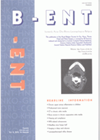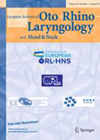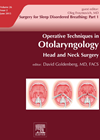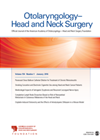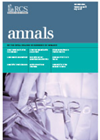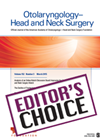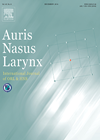
Journal Reviews
McIsaac scores in tonsillitis
Acute tonsillitis is usually caused by a viral infection, however often antibiotics are prescribed without a confirmed diagnosis of a bacterial infection. The Modified Centor (McIsaac) criteria, which include fever (>38°c), tonsillar exudate, no cough, anterior cervical lymphadenitis and age,...
The effect of adenotonsillectomy on the immune system
Parents often ask about the effect of adenotonsillectomy on the immune system, with concerns that the child may be prone to more infections postoperatively due to the absence of immune tissue. This Belgian literature review looked at the local and...
Factors determining success of adenotonsillectomy in paediatric obstructive sleep apnoea
Patient selection is important for any successful surgical procedure. Adenotonsillectomy for obstructive sleep apnoea secondary to adenotonsillar hypertrophy is no exception. This retrospective Taiwanese study attempts to find preoperative factors that have a positive influence for this commonly performed operation....
Surgical options for children with OSA
This paper looks at the surgical management of OSA in children and approaches the method of patient selection initially. They discuss the role of polysomnography in that it is part of the AAOHNS criteria in those patients with OSA symptoms...
Velopharyngeal insufficiency after adenotonsillectomy
The authors retrospectively reviewed the clinical records of 320 paediatric patients who underwent either tonsillectomy, adenoidectomy or adenotonsillectomy, under a single paediatric ENT surgeon. Patients with pre-existing velopharyngeal insufficiency (VPI) were excluded, as assessed by preoperative testing for nasal air...
Long-term outcomes after (adeno) tonsillectomy
Patient-reported outcome measures (PROMs) are used increasingly to fill an ‘evidence gap’ where healthcare rationing threatens particular treatments. Tonsillectomy is a long-established and effective treatment for recurrent tonsillitis and obstructive sleep apnoea (OSA) in children. The T-14 outcome measure examines...
Local dexamethasone infiltration in tonsillectomy
Intravenous dexamethasone is routinely given during tonsillectomy for its effects on postoperative pain and nausea. This Chinese randomised study divided 240 children undergoing tonsillectomy into three groups, receiving either no steroid, intravenous dexamethasone, or the same amount of dexamethasone infiltrated...
What’s the risk of regrowth with partial (intracapsular) tonsillectomy
Partial (intracapsular) tonsillectomy is enjoying somewhat of a revival offering the potential for less postoperative pain and bleeding whilst relieving the obstructive element. The authors look at 303 patients, 82 of whom had partial tonsillectomy using coblation. They measured pre...

